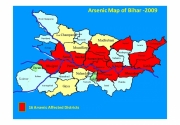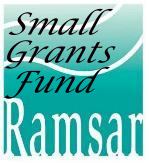/sub-categories/news-and-articles
News and Articles
Increasing transparency and accountability – Another win!
Posted on 14 May, 2010 11:31 AMGuest Post: Amrtha Kasturi Rangan, Arghyam
“When a State Government instead of itself undertaking a work, if it allows an agency like the petitioner Company by substantially funding them to undertake such work which is essentially that of a municipality, no one can say that such work of the petitioner company as a private activity. On the other hand, it is very much a public activity over which public interest can generate”.
Judgement in WP NO. 9794 of 2008 and M.P. Nos. 1 and 2 of 2008
The Right to Information (RTI) Act, 2005 was enacted to ensure transparency and accountability. As per the Act any citizen can write and ask for information from a “public authority”. The Act also requires that public authorities make information about themselves available to the public – mandatory disclosure.
From its time of enactment, there have been several challenges in operationalizing the RTI Act. A progressive civil society has constantly challenged hesitation and delay in providing information. Several ambiguities have required judicial intervention to interpret the letter and the spirit of the Act. Here we look at the success of widening the scope of accountability to include private agencies who partner with the government under the Public Private Partnership (PPP) model.
Arsenic contamination of groundwater in Bihar and mitigation strategies - A research study
Posted on 12 May, 2010 11:24 PM This presentation deals with the problem of arsenic contaminated aquifers in the Gangetic belt of Bihar and the failure of the state government in tackling the crisis and calls for the establishment of a centralized knowledge & research hub with an understanding of the regional peculiarities to mitigate the crisis.
This presentation deals with the problem of arsenic contaminated aquifers in the Gangetic belt of Bihar and the failure of the state government in tackling the crisis and calls for the establishment of a centralized knowledge & research hub with an understanding of the regional peculiarities to mitigate the crisis.
It traces the origin of arsenic crisis to the switch from use of surface water to groundwater. The health impacts of arsenic poisoning and the factors that aggravate arsenicosis are explained. A total of sixteen districts (fifty-seven blocks) in Bihar are affected by high levels of arsenic in groundwater, in trivalent form, which is a more toxic form of arsenic.
Formulating action plan for removal of arsenic contamination in West Bengal - Planning Commission Task Force report
Posted on 12 May, 2010 11:49 AMThe report of the Task Force appointed by the Planning Commission presents an action plan for removal of arsenic contamination in West Bengal. It looks at the extent of the problem, its intake sources, technologies available and the operation and maintenance (O&M) issues.
It outlines the diverse technologies based on various scientific principles, assesses them based on their scale of operation (domestic or community) on techno-economic considerations & infrastructure required and provides suggestions. Short, medium and long term measures are outlined for tackling the problem of arsenic contamination in drinking water supply in the state.
Mukuteswara Gopalkrishnan to receive American Academy of Water Resources Engineers highest honor
Posted on 11 May, 2010 05:51 PMArticle and Picture Courtesy: American Academy of Water Resources Engineers

John J. Cassidy, Ph.D., P.E., Dist.M.ASCE, NAE, Hon.D.WRE, of Walnut Creek, California, and Mukuteswara Gopalakrishnan Hon.D.WRE, of New Delhi, India and the Secretary General of International Commission on Irrigation and Drainage (ICID) were recently elected the nineteenth and twentieth Honorary Diplomates of the American Academy of Water Resources Engineers. The Honorary Diplomate status is AAWRE's highest honor given to an individual. Since the founding of AAWRE in October 2004, twenty individuals have received the Honorary Diplomate, Water Resources Engineers (Hon.D.WRE) status from the Academy.
Honorary Diplomate status is only granted to outstanding individuals who meet one or more of the following criteria: has attained a position of eminence in the water resources engineering profession, has made a singular noteworthy achievement or sustained noteworthy contributions to the advancement of the water resources engineering profession, or has rendered outstanding service over a sustained period of time in the field of water resources and to the work of the Academy.
Agriculture Rainwater Harvesting - Newsletter from International Rainwater Harvesting Alliance (IRHA)
Posted on 11 May, 2010 04:50 PMInternational Rainwater Harvesting Alliance (IRHA) was created in Geneva in November 2002 following recomendations formulated during the World Summit for Sustainable Development in Johannesburg two months earlier. The mandate called for federation and unification of the disparate rainwater harvesting (RWH) movement around the world, to promote rainwater as a valuable water resource and to build on achievements in this field for the fulfilment of the Millennium Development Goals.
In partnership with the most eminent organisations and individuals in the field, the IRHA provides a lobbying and advocacy platform for RWH. It supports the growth of RWH solutions to water supply problems. It also provides a forum for its members to work together or share experiences, and thus for the benefit of people living with water scarcity.
Topic of this issue: Agricultural Rainwater Harvesting
Sankalp awards 2010 winners : SarvaJal & Shramik 3S recognised for their double bottomline(social and financial) returns
Posted on 11 May, 2010 04:28 PM
The Sankalp 2010 Awards and Investment Forum is an annual Intellecap initiative committed to catalyzing entrepreneurship in the social enterprise space. Sankalp actively facilitates collaboration between established and budding entrepreneurs, investors, thought leaders and sector stakeholders interested in contributing effectively towards this fledgling yet fast-growing industry.
With a strong focus on double bottomline (social and commercial) enterprises Sankalp, in its second edition, aims to accelerate investment in this space through the showcase of pioneering, sustainable and innovative enterprises capable of long term social impact. Sankalp's primary goal is of bringing together various stakeholders sharing a common conviction that capital should be invested to create multiple bottom-line returns (financial, social and environmental) and not exclusively financial (profit-maximizing) or social (philanthropic) returns.
Thus having successfully established a niche for itself; Sankalp has taken the lead in recognizing those businesses that have mastered the balancing act between the profit and social objectives. Sankalp 2010 Forum and Awards shall recognize, award and connect the most investible social MSMEs (Micro, Small and Medium enterprises) operating in 5 high impact sectors:
On variability of hydrological wet season, seasonal rainfall and rainwater potential of river basins in India (using rainfall data over 1813-2006) - An IITM technical paper
Posted on 10 May, 2010 09:12 PMThe paper discuses climatological and fluctuation features of important parameters of the Hydrological Wet Season (HWS), viz. starting and ending dates, duration, seasonal rainfall/rainwater and surplus rainfall/rainwater potential individually for the eleven major and thirty six minor river basins, the West Coast Drainage System (WCDS) and the rest of the country. It is based on reliable monthly rainfall data from a well spread network of three hundred and sixteen rain gauge stations from 1813 upto 2006.
The paper observes that the average period of the HWS is in close conformity with the southwest Monsoonal Rainy Season (MRS) over the basins in the Core Monsoon Rainfall Regime (CMRR). In the Mixed Monsoon Rainfall Regime (MMRR) covering south peninsula, northeast and extreme north, the HWS is of longer duration compared to the MRS due to extra-monsoonal rainfall over there. The mean starting date of the HWS is May 30, ending October 11 and the duration is 135 days for the entire country.
Ramsar Small Grants Fund
Posted on 10 May, 2010 10:41 AM Article Courtesy: Funds for NGOs.org
Article Courtesy: Funds for NGOs.org
“The Ramsar Small Grants Fund (SGF) was established in 1990 as a mechanism to assist developing countries and those with economies in transition in implementing the Convention and to support the conservation and wise use of wetland resources, with a strong human and social dimension. From 1991 to 2008 the Fund has provided a total of 7.5 million Swiss Francs to 227 projects from 108 countries, providing up to 40,000 Swiss francs (about US$32,000) per project.”
Piped water supply to Greater Bangalore: Putting the cart before the horse – An EPW special article
Posted on 09 May, 2010 06:47 AMThe paper critically evaluates the Greater Bangalore Water and Sanitation Project (GWSAP), implemented by the Bangalore Water Supply and Sewerage Board (BWSSB). This project aims to extend piped water supply from the Cauvery to over two million residents in peri-urban Bangalore. This ambitious project has been viewed against the backdrop of the broader trends and debates around market-based reforms in the water sector in Karnataka.
Developing markets for watershed services and improved livelihoods: Fair deals for watershed services in India - An IIED research paper
Posted on 07 May, 2010 10:51 PM The report presents field experiences and lessons in developing Incentive-based Mechanisms (IBMs) for watershed protection services and improved livelihoods at micro and macro-scales, derived from an action-learning project in India at three locations in the states of Himachal Pradesh (HP) and Madhya Pradesh (MP).
The report presents field experiences and lessons in developing Incentive-based Mechanisms (IBMs) for watershed protection services and improved livelihoods at micro and macro-scales, derived from an action-learning project in India at three locations in the states of Himachal Pradesh (HP) and Madhya Pradesh (MP).
An inter-village transaction was facilitated at one site (the Kuhan micro-catchment in HP), while at the second site (Suan micro-catchment in HP) a transaction failed to materialize despite initial interest. At the third site in MP, there was interest in undertaking a transaction between the city of Bhopal and the catchment of its lake, the Bhoj Wetlands.
The action research has yielded insights into the role of hydrological information, types of incentive mechanisms, the importance of institutions and the implementation of IBMs.